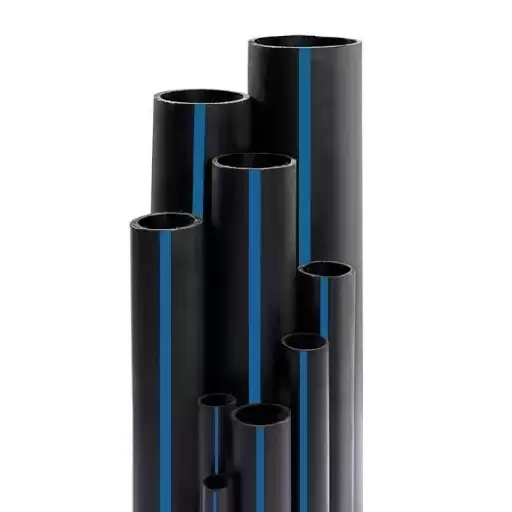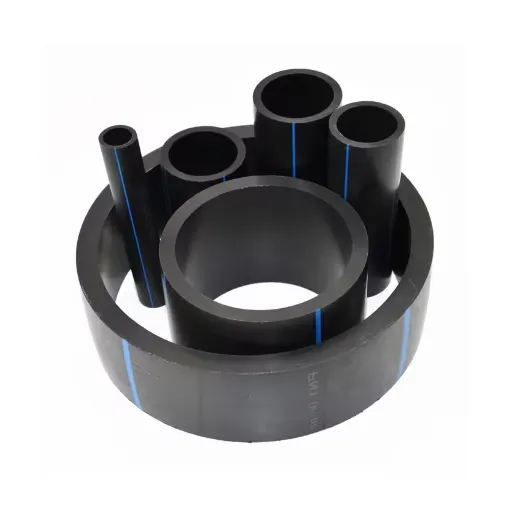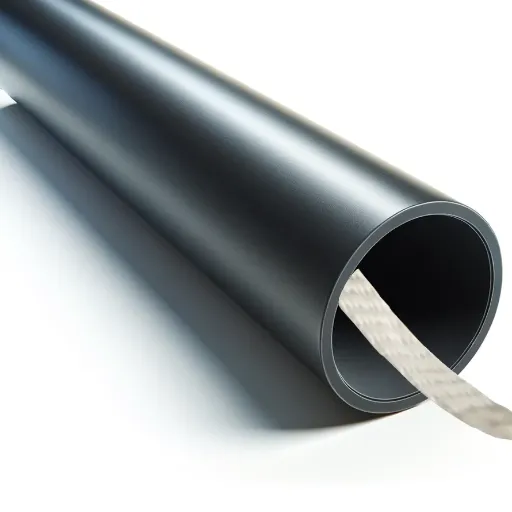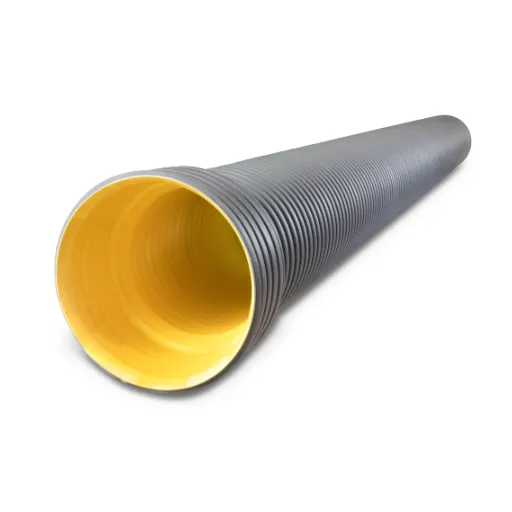High-density polyethylene (HDPE) pipes have become an essential component in modern infrastructure, offering unmatched durability, flexibility, and efficiency across a variety of industries. Among the different classifications of HDPE pipes, SDR11 stands out as a critical specification for projects that demand high-pressure tolerances and reliable performance. But what exactly does SDR11 mean, and how do its dimensions impact functionality and application? This guide is designed to provide a detailed, technical exploration of SDR11 HDPE pipe dimensions, breaking down their key specifications, uses, and advantages. Whether you’re an engineer, contractor, or simply seeking a deeper understanding of polyethylene pipe systems, this article will serve as a trusted resource for unpacking the complexities of SDR11 pipes.
What Are the Key Specifications of SDR11 HDPE Pipe?
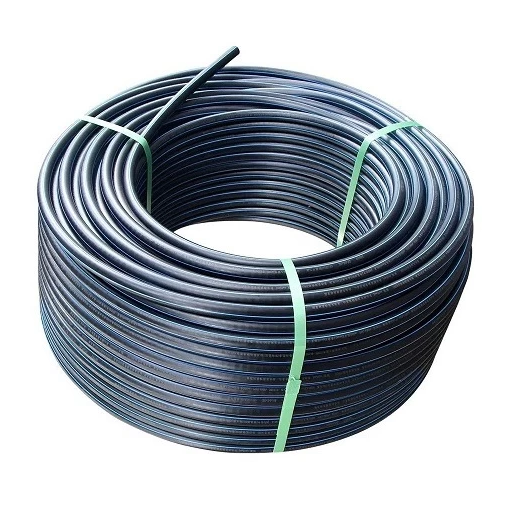
How Does Wall Thickness Affect SDR11 Pipe?
The thickness of the wall of an SDR11 HDPE pipe greatly determines the pressure rating and the durability of the pipe. SDR or Standard Dimension Ratio is the pipe’s outer diameter relative to the wall thickness. As for SDR11, the wall thickness is set at a value that they have to 11, which means the pipe can withstand greater internal pressure compared to other higher SDR value pipes like SDR17.
Stronger walls give more resistance to pipe reaching the internal pressure, therefore, internal SDR11 is favorable in high-pressure situations such as water distribution, gas pipelines, and industrial fluids. The balance between strength and flexibility ensures that SDR11s perform optimally in harsh conditions instead of too much rigidity, which would result in stress-induced brittleness and cracking.
Moreover, the wall thickness is directly proportional to the long-term performance of the pipe. Extra material on the SDR11 pipes makes it less prone to wear and abrasion, increasing its service life. This contributes to critical infrastructure projects, which require a reliable option as there is no room for failure. The reliable functioning under different operating conditions is thanks to the adequate wall thickness, which also ensures structural integrity.
What Is the Pressure Rating for SDR11 HDPE Pipes?
SDR11 HDPE pipes are usually said to accept a pressure class of roughly 160 psi (pounds per square inch) at 73°F. This is an SDR-rated pipe, and the Default Pressure Rating Within a Standard Dimension Ratio (SDR) is determined by the outer diameter and thickness of the pipe wall. The lower SDR number in SDR11 signifies thicker walls and therefore gives this pipe a greater ability to withstand internal pressure compared to higher SDR-rated pipes.
This value, however, may change depending on the operating temperature. For example, the pressure rating becomes weaker because of thermal expansion, as the material is weaker at higher temperatures. Most manufacturers include a derating factor or chart to help ensure the pipe is operating safely in these “high” temperatures. These factors must be considered when designing systems that operate in diverse temperature ranges.
It is a requirement to check the manufacturer’s technical details and industry standards to verify the exact pressure rating metrics for a given application. This step guarantees satisfactory system performance and safety while reducing the likelihood of system failure under stress.
How Does Corrosion Resistance Contribute to Pipe Longevity?
When it comes to pipes and anything in construction, corrosion resistance is one of the most important factors as it prevents the pipes from degrading due to environmental and chemical exposure, thus lessening their longevity. All types of pipes undergo some form of corrosion due to elements like moisture, oxygen, or certain chemical agents. Without the right interventions, such a pipe could result in diminished structural integrity, leakage, or even total failure. Employing materials with inherent corrosion resistance, for instance, stainless steel, or applying specially designed coatings can greatly enhance the operability and longevity of the systems.
Pipes with high corrosion resistance preserve their physical and mechanical attributes even with demanding servicing conditions. Pipes are scrubbed clean for resistance to static fluid flow, and then their internal surfaces are inspected for the presence of chemical or electrochemical corrosion. For instance, in industrial settings, anti-corrosive additives guarantee operational reliability and avert expensive downtime due to repairs or replacement.
When selecting the corrosion-resistant pipe material, operating conditions like temperature, pressure, and nature of the fluid being conveyed should be evaluated. From a water distribution system to an industrial processing facility, implementing corrosion resistive measures is economically advantageous and is essential for safe and efficient operations.
How to Determine the Correct Pipe Sizes for Your Project?
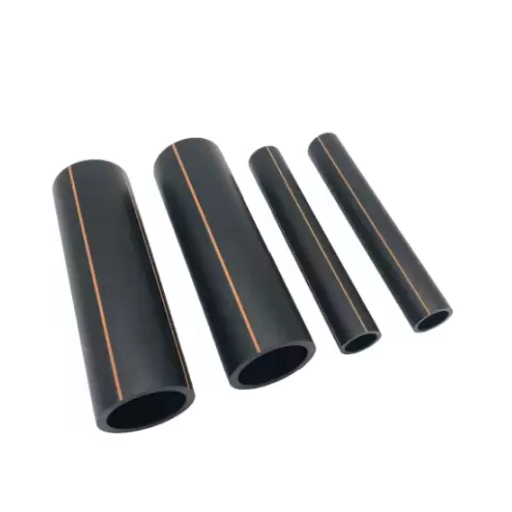
What Role Does Outer Diameter Play in Pipe Selection?
The outer diameter (OD) of a pipe affects its application suitability and system requirements. It has a significant impact on the strength, volumetric flow rate, and compatibility with fittings and couplings. For example, in high-pressure systems, a combination of the pipe’s OD and its wall thickness dictates the pipe’s ability to contain internal pressures without experiencing deformation or structural failure.
In terms of fluid mechanics, the OD affects the volumetric flow rate and velocity that a pipe can accommodate. Coupled with the pipe’s internal diameter and surface roughness, it can be used by engineers to determine pressure drop for system efficiency and devise computational or manual simulations based on established flow equations, the most known being the Darcy-Weisbach equation. Furthermore, some regulators or industry norms may issue specific requirements regarding outer diameter dimensions, especially in the petroleum, chemicals, and water distribution sectors.
Moreover, the infrastructure or equipment already in use is only compatible where the pipe OD perfectly matches pre-manufactured parts such as flanges, gaskets, and valve housings. Fitting the wrong OD causes mismatches which may lead to leaks and operational inefficiencies as well as increased maintenance costs. With this in mind, understanding and factoring the specifics of OD in pipe selection is not only a technical requirement, but also a best practice in system design for cost-efficiency and dependability.
How to Use an HDPE Pipe Size Chart Efficiently?
To take full advantage of an HDPE pipe size chart, one must have the correct methodology to avoid peculiarities that lead to errors during system design or installation. Start by determining the purpose of the specific HDPE pipe, taking into account factors such as the fluid type, temperature, pressure, and environmental restrictions.
Also, check the pressure rating, which is most often highlighted by the pipe’s Standard Dimension Ratio (SDR), since it relates to the operational pressure of the system required for the selected pipe. For example, an HDPE pipe with an SDR of 11 can withstand greater pressures than an HDPE pipe with an SDR of 17. Thus, aligning the maximum expected pressure with the pipe’s SDR value is very important.
Moreover, consult the pipe material compatibility data as part of material selection to be certain that the material can safely convey the fluid. The charts will communicate a plethora of information, such as noting chemical and temperature compliance thresholds, along with cross-reporting their industry standards.
For improving accuracy, consider using digital computers which incorporate pipe sizing calculators along with current databases of HDPE materials. Such tools increase automation and help eliminate possible errors in the selection process. Proper application of such charts reduces the possibility of system operational deficiencies, failures, or unnecessary maintenance expenditure. Such careful attention to HDPE pipe size charts increases the efficiency of pipeline systems, which is essential for professionals in the field.
How to Consider Pipe Fitting in the Design Phase?
During the design stage, considering pipe fitting, some factors are very critical for the efficiency and dependability of the system. Initial action involves choosing a medium, such as chemicals, gases, or liquids, so that piping materials will not be corroded, degraded, or contaminated. A thorough system pressure analysis is critical because it affects the selection of the system’s fittings to withstand its operational pressure and temperature without structural failure.
Dimensioning activities must include hose and pipe diameter, wall thickness, and all fittings geometry to achieve proper flow and minimize leakage or mechanical stress at connection points. Evaluation of the flow must be done using CFD to identify turbulence or pressure drop potentials through fitting intersections. Advanced methods of joining HDPE and precision-machined fittings greatly improve flow control, besides other benefits.
Performing static and dynamic stress designs, protection against unanticipated failures is also ensured as well as inherent design safety factors. Besides avoidance of operational downtimes, collaborative work with seasoned engineers ensures that simulations do not deviate from actual data.
What Are the Benefits of Using HDPE Pipe in Various Applications?
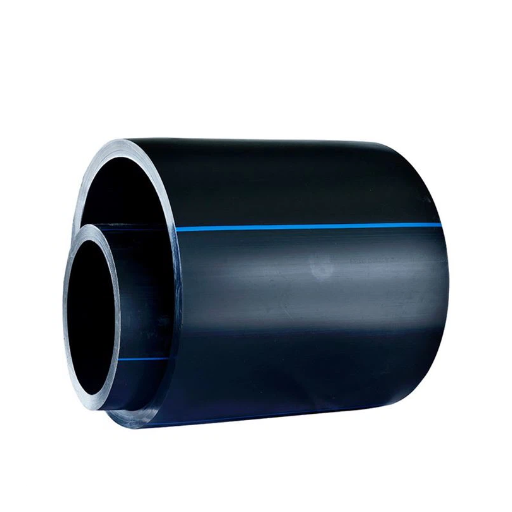
Why Is High-Density Polyethylene Preferred for Water Supply?
Considering its lower long-term costs and superior physical and chemical properties, High-Density Polyethylene (HDPE) has emerged as one of the leading choices for water supply systems. One of the major advantages of HDPE is its exceptional durability and resistance to corrosion, characteristics which are critical when dealing with potable water delivery pipelines or systems exposed to the elements. Unlike concrete or steel, the traditional options, HDPE pipes will not rust, rot, or degrade when exposed to chemicals. This ensures a much longer service with minimal maintenance.
Additionally, HDPE pipes are extremely flexible and resistant to substantial water hammer forces and seismic activity. Increased flexibility reduces the chances of a pipe failing under dynamic load conditions, thus making them appropriate for rugged terrains as well as places with seismic activity. With reduced friction loss, the material’s smooth internal surface enhances the efficiency of water flow and energy usage in pumping systems. In addition to these factors, HDPE pipes also have low thermal conductivity, reducing heat loss or gain and further improving their effectiveness in hot and cold water supply systems.
Installations of HDPE offer benefits that are also important for system integrity and preventing water contamination. Used in construction, these two-step, fiber-wound piping undergoes unique methods that oxidize their surfaces. This promotes robust and leak-free joints, essential in maintaining system integrity. HDPE’s lightweight nature helps streamline the transportation process, allowing for quicker installations. This makes them optimally efficient in modern infrastructure projects.
How Does HDPE Pipe Ensure Long Service Life in Municipal Systems?
The controlled engineering design, along with the distinctive attributes of high-density polyethylene (HDPE), contributes to its long-life service in pipes under municipal systems. HDPE has a high resistance to corrosion, erosion, and interaction with chemicals that destroy pipe materials such as metal and even concrete. This resistance helps minimize the amount of maintenance required and reduces infrastructure downtime. Also, HDPE pipes boast superior flexibility and can withstand ground shifts and seismic activities, without cracking or snapping.
Joints or seals that are prone to leakage in conventional systems are often weak points. Homogeneous systems which eliminate such points are created by nondestructive seamless joining to HDPE pipes using butt and electro-fusion welding. Case studies and laboratory tests confirm that HDPE can withstand varying pressures, temperatures, and flows for decades. Under normal operating standards, HDPE is expected to last over 50 to 100 years.
In addition, compliance with industry benchmarks such as ISO 4427 and ASTM D3350 certifies the HDPE materials’ durability and performance in diverse applications. These benchmarks outline the composition of the material, its strength, the need for numerous tests, and enhance its reliability in municipal installations. The material’s lightweight construction also assists accuracy in the hands of workers during handling, thus reducing errors that can jeopardize system reliability. Cumulatively, these advantages make HDPE pipes resilient and sustainable for water distribution and sewage management systems, delivering operational efficiency for an extended period.
What Makes HDPE Pipe Cost-Effective for High-Pressure Systems?
Maintaining and installing HDPE (High-Density Polyethylene) pipes is cost-friendly, saving both time and money when used under high-pressure systems. Their resistance to corrosion, chemical degradation, and wear translates into an extreme elongation of service life, greatly reducing the frequency of replacements and repairs. This material is also lightweight, simplifying transportation and handling. Its high strength-to-density ratio ensures performance under high-pressure conditions as well.
Infrastructure projects can now incorporate HDPE with its reduced production costs, making it far more economically friendly than steel or concrete. Traditional materials face structural failure under fluctuating pressure levels, increasing downtime and repair expenses, while HDPE minimizes these costs. Moreover, the pipes’ fusion welding technique creates leak-free joints, which eliminates expensive jointing components, water loss, and operational inefficiency.
Less installation labor translates to up to 30-50% savings, placing HDPE pipes as optimal choices for engineers and project planners in high-pressure applications demanding both precision and budget restraint.
How Does ISO 4427 Standard Impact HDPE Pipe Manufacturing?
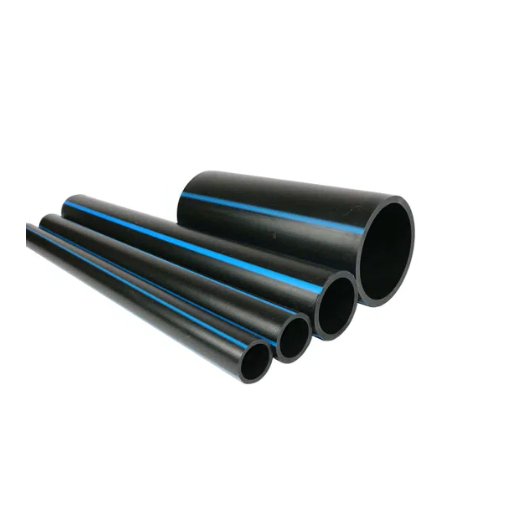
What Are the Specifications Under ISO 4427 for HDPE Pipes?
The ISO 4427 standard details the engineering and manufacturing processes of specific polyethylene (PE) pipes and fittings that form an integral part of water supply systems. Within this standard, high-density polyethylene (HDPE) pipes are subjected to specific measurements along with mechanical and functional tests to confirm their strength, safety, and effectiveness in both civil plumbing and industrial water systems.
Criteria particularly highlighted include the classification of the pipes by their internal pressure rating. The standard sets boundaries for pressure tiers such as PN6, PN10, PN16, etc, which are conferred based on the material’s minimum required strength (MRS) and wall thickness. Other essential standards include Density, Melt Flow Rate (MFR), Hydrostatic Strength, and the ability to withstand internal pressure at 20°C and 80°C for certain periods.
ISO 4427 also sets the outer diameter tolerances for pipes of certain SDR (Standard Dimension Ratio) wall thicknesses, ensuring trouble-free compatibility with fittings, adherence to benchmarks, and uncontested performance conditions during operation. It further specifies the use of virgin polyethylene compounds for the manufacturing of the pipes to guarantee reliability and safety over time in water transport systems.
With such specifics, ISO 4427 sets the international standard for HDPE pipe fabricators while emphasizing the need to observe quality and standardization in the provision of effective and sustainable pipeline solutions.
How Does ISO 4427 Ensure Pipe Reliability?
The combination of rigorous testing procedures, quality control of the materials, and evaluative components of the HDPE pipes ensures reliability as outlined in ISO 4427. The standard requires mechanical testing including: the tensile strength, elongation at break, and slow crack growth resistance to be performed on HDPE pipes, which guarantees operational stress endurance over time. Also, ISO 4427 has corresponding critical methods for hydrostatic pressure testing that confirm the pipe’s ability to withstand internal pressure for prolonged periods without risk of failure.
The regulation reinforces the utilization of virgin polyethylene composites which have specific requirements to be a certain density, MFR (melt flow rate), and thermally stable. Multi criterion evaluations these materials undergo ensure reliability of the structure and chemical resistance of the pipe throughout numerous applications. In addition, pipes falling under ISO 4427 have strict requirements for fusion compatibility and dimensions, which guarantee no hassle fitting with the systems and strength in diverse operational conditions.
With the gap that would be bridged with the incorporation of these standards, operational reliability is expected to be increased, along with consistency in manufacturing across all regions, with bounds set by ISO 4427. The approach taken incorporates everything from the ever-evolving needs of water transportation systems to enduring reliability and compliance. However, further reinforcing its credibility for HDPE pipe production guidance was its comprehensive alignment with durability and long-term reliability.
How to Address Common Challenges with 2-Inch HDPE Pipe?
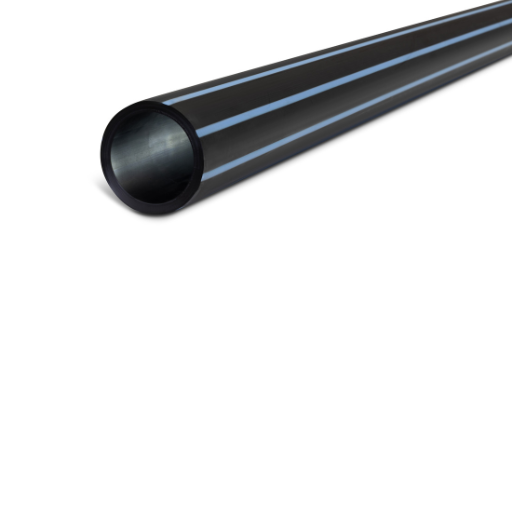
What Are the Installation Considerations for 2-Inch Pipes?
The compliance with guidelines and specific standards during 2-inch HDPE pipe installations is indispensable within the hygiene industry regarding effective functionality and useful lifespan. One critical factor is the preparation of trenches, especially concerning optimal pipe depth and width during and after installation. The trench base must be free of cutting tools and must be properly sloped.
Equally important is precision about pipe alignment and piping proper jointing procedures. High-density polyethylene pipes must have heat fusion or mechanical joints, both of which must be executed with care at the interfaces to avert leaks or structural weakness. In heat fusion, the bond is strongest at certain temperatures, pressures, and periods of holding, to which each parameter must be best controlled to meet uniform demand.
Above all these, operating extremes of environmental temperatures must be controlled because they impact the hose’s physical properties. Measures to limit expansion or contraction depending on the operating environment must be done as appropriate. Also, the selected material for backfilling must not be large stones or other debris as large as gaps, as should be achieved in layers around the pipe, which otherwise contribute towards undue pressure deformation and relax around the pipe.
For systems with pressure, hydrostatic testing is very important after installation. This process checks the integrity of the pipeline by placing it under pressure to see if it produces any leaks. Proper completion of these procedures guarantees that the 2-inch HDPE pipe system will continue to be reliable and effective under different working conditions.
How to Manage Pressure and Flow Rates in Smaller Pipes?
Maintaining the pressure and flow rate of 2-inch HDPE pipes requires sound knowledge of fluid movement, materials, the system, and other factors. Smaller pipes tend to have more problems with pressure drops and flow rate increases due to their limited diameter, which further increases resistance. To alleviate these problems, system designers need to apply precise calculations to flow rate, length of the pipe, and roughness coefficients using the Darcy-Weisbach equation or the Hazen-Williams formula.
Operational pressure also needs to be within the limits of the rated class pressure for the pipe to avoid stress or failure in the long term. Adding pressure control equipment, together with surge protection systems to control transient pressure spikes, can mitigate these issues. Specific pump sizing also helps flow rates, alongside avoiding sharp bends or cuts, and ensuring the pipe layout design is correct.
Flow velocities need to respect the range of 2 to 5 feet per second to prevent excessive friction losses while minimizing sediment deposition or erosion risk within the pipe walls. Operators are able to keep system efficiency and reliability while adapting to operational demands due to the integration of smart monitoring tools, like smart flow meters, with the proper technical guidelines and their modern-day automation systems.
How to Prevent Leaks in HDPE Piping Systems?
Avoiding leaks in HDPE piping systems requires precise installation, quality control, and regular maintenance. One critical aspect is the correct execution of the fusion process. Both butt fusion and electrofusion must be performed under specific heating and cooling conditions, as these procedures need to create bonds which joints weak ends, and cool securely, so the joints need no worries. Moreover, maintaining clean and dry surfaces, choosing appropriate fittings, and compatible toeing them before fusion also achieves a leak-free system.
A necessary tested step is pressure testing for vulnerabilities post-installation before the system gets commissioned. It includes filling the pipe using air or liquid, applying a specified pressure, and monitoring for surges. Other factors, like environmental ones as soil quality and external loads, should be controlled during installation too. Installing protective barrier schemes like sleeves mitigates extrinsic mechanical stresses on the pipes without invalidating the loose.
System integrity is ensured and long-term performance optimized when these practices are used in conjunction with certified HDPE materials. Routine inspections and preventative maintenance further mitigate the chances of experiencing leaks. This includes monitoring for scratches, damage, or joint misalignment, especially in regions with shifting terrain, or high mechanical stress and loads, periodically.
References
Frequently Asked Questions (FAQ)
Q: What does SDR 11 mean in the context of HDPE pipes?
A: SDR 11 refers to the Standard Dimension Ratio, which is the ratio of the diameter of the pipe to the wall thickness. For SDR 11, the outer diameter is 11 times the wall thickness, providing a specific parameter for understanding pipe toughness and working pressures.
Q: What are the primary characteristics of HDPE pipes?
A: HDPE pipes are known for their toughness, resilience, and ability to withstand corrosive environments. They are resistant to various chemicals such as acid, alkali, and salt, making them ideal for municipal water systems, irrigation systems, and gas transportation.
Q: How does the wall thickness affect the pressure rating of SDR 11 HDPE pipes?
A: The wall thickness directly impacts the pipe’s pressure rating. SDR 11 pipes have a specific wall thickness that allows them to handle low-pressure applications while still maintaining their structural integrity and toughness.
Q: Why are SDR 11 HDPE pipes considered economical?
A: SDR 11 HDPE pipes are considered economical due to their cost-effectiveness in installation and maintenance. Their durability reduces replacement frequency, and their lightweight nature lowers transportation costs compared to metal pipes.
Q: What are the common applications of SDR 11 HDPE pipes?
A: SDR 11 HDPE pipes are commonly used in drinking water and wastewater systems, gas distribution, irrigation systems, and industrial applications involving the transport of various chemicals.
Q: How do environmental conditions affect the performance of HDPE pipes?
A: HDPE pipes perform well under a wide range of environmental conditions. They are UV resistant and can withstand extreme temperatures, making them suitable for diverse applications from clean water transport to waste water management.
Q: Are SDR 11 HDPE pipes suitable for large diameter applications?
A: Yes, SDR 11 HDPE pipes are suitable for large diameter applications due to their strength and resilience. Their large diameter and toughness make them ideal for high-volume water and waste transportation systems.
Q: What is the significance of PE4710 in HDPE pipes?
A: PE4710 is a high-performance grade of polyethylene used in manufacturing HDPE pipes. It provides enhanced toughness, higher pressure ratings, and improved resistance to environmental stress, making it ideal for SDR 11 pipes.
Q: How does HDPE compare to traditional metal pipes in terms of corrosion resistance?
A: Unlike metal pipes, HDPE pipes are not susceptible to corrosion, making them an excellent choice for transporting corrosive substances like acid and alkali. This characteristic extends their lifespan and reduces maintenance costs.
Q: What are the advantages of using SDR 11 HDPE pipes for gas distribution?
A: SDR 11 HDPE pipes offer several advantages for gas distribution, including flexibility, resilience, and the ability to withstand harsh environmental conditions. Their toughness and low-pressure capabilities make them a reliable choice for gas transportation systems.



